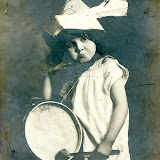“One of the strange things about living in the world is that it is only now and then one is quite sure one is going to live forever and ever and ever.”
Frances Hodgson Burnett; The Secret Garden
In 1900 the infant mortality rate in England began to plummet, from around 160 to 180 deaths per 1000 children in the late 19th century (distributed across the country; in industrial areas the rates were much higher) to about 110 in 1910 and falling steadily. At Christmas in 1904 the original stage play of Peter Pan opened in London. Six years later Frances Hodgson Burnett published The Secret Garden, the story of an orphaned girl restoring life to a family living in self-imposed isolation. In Peter Pan children stay eternally young in Never Never Land. In The Secret Garden an orphaned girl breathes life into a family living in morbid isolation. There is nothing coincidental about these pieces of information. People were beginning to think of childhood as a magical time and children (in literature anyway) were being given a germ of influence over the adult world. Photography played a part this change of attitude. In early cartes de visite and cabinet cards children were often photographed against a drab studio background, no different to the way their parents were, and the attitude they presented to the camera was one of sombre discomfort. It was as though childhood was just a phase adults had to go through. Gradually more elaborate and imaginative props were introduced and children were encouraged to perform. By the turn of the century and the introduction of the postcard, they had started to inhabit fantastically theatrical stages closer to Never Never Land than mundane reality.
The best known authors of late Victorian and Edwardian children’s fiction had childhoods that were famously wretched or punctured by tragedy. Whatever Peter Pan offers Freudian analysis pales in comparison to the relationship that Barrie had with his mother. When Burnett’s father died the family went from moderate comfort to poverty more or less overnight and Kipling and Andersen claimed they were abused as children. Their books weren’t so much offerings of hope to the young as ways for themselves to escape the past. One way to do that was to reinvent it and give it qualities it had never possessed. Around the turn of the century – a little before to be precise – childhood became sentimentalized. Children appear in studio portraits holding their favourite toys and wearing Fauntleroy suits - inspired by Burnett’s novel Little Lord Fauntleroy about a boy who teaches by example the virtues of charity to a family of cold hearted English nobles. Childhood was regaining its innocence. It was also becoming cute.
This festishizing of children is apparent in all of these photographs, most obviously in the one above of the girl on the pedestal. At first glance it is a chaste enough image, and certainly more cute than erotic, but everything in it from the girl’s costume to her expression mirrors contemporaneous postcards of women where the intentions were more obvious. In a lot of postcards from this era girls especially have been encouraged to be coquettish. This could mark the beginnings of the sexualisation of childhood in popular culture, or it could be something less contrived. Cuteness in children necessarily involves a certain precocity on their part and the photographers, and parents, couldn’t obtain that without referring to the most obvious differences between an adult and a child.
Just like the novels of Barrie and Burnett, this was a genre supposedly celebrating childhood but it was also about loss, the things denied to the older generation and a desire on the part of parents that childhood could last forever.
VIEW THE GALLERY HERE
 |
| NEVER NEVER LAND |




Hi John,
ReplyDeleteThis is wonderful !!
It's one thing for these masterpieces to just exist somewhere and quite a different thing to weave them together with a background fabric...
makes all the difference !
Permit me to repeat my imploration (!)
A hard copy of your blog would put Camera Lucida to shame..
http://blog2print.sharedbook.com/blogworld/printmyblog/index.html
Excellent blog/post! It seems photography could be one of the ways to change the world/people's thinking as books could do it too...
ReplyDeleteI usually post this to every blog I find fascinating, hope you'll like my suggestion? Do you use sites like zazzle.com, cafepress. com, fiverr? They could be a good way to promote your blog/works and to help "remove" stupidity in the streets like headlines on t-shirts, fridge-magnets, cups, etc: My Boyfriend kisses Better Than Yours, FBI - female body inspector, etc. Not everything we see and think of should be about sex, right? It would be much better if there were more nice pictures of mythical creatures, good thoughts, poems from fantasy genre, etc? I'm allanbard there, I use some of my illustrations, thoughts, poems from my books (like: One can fight money only with money, Even in the hotest fire there's a bit of water, etc). Best wishes! Let the wonderful noise of the sea always sounds in your ears! (a greeting of the water dragons'hunters - my Tale Of The Rock Pieces).